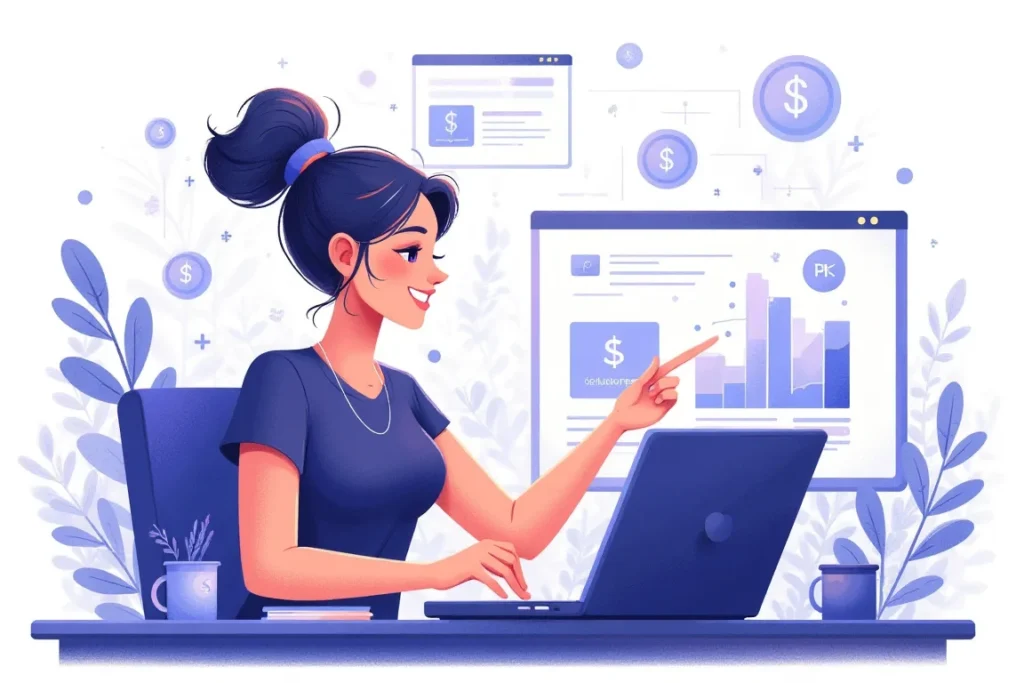Thousands of entrepreneurs unknowingly violate copyright laws every single day through poorly sourced PLR content. The consequences aren’t just scary – they’re business-ending. Account bans, legal threats, and damaged reputations are just the beginning. But imagine having crystal-clear guidelines that let you harness PLR’s incredible profit potential while staying completely protected from legal disasters.
Key Takeaways
PLR digital products can absolutely cause copyright issues if you don’t do your due diligence. The biggest risks come from purchasing PLR from unreliable sources, failing to read license agreements, and not verifying the legitimacy of the content you’re buying.
Here are the essential points you need to understand:
- PLR sellers don’t always have legitimate rights to the content they’re selling, which can expose you to copyright infringement claims
- Platform violations are common because many marketplaces have strict rules against PLR content that users often overlook
- License agreements vary dramatically between PLR products, and misunderstanding these terms can lead to legal trouble
- Due diligence is non-negotiable – you must research PLR providers and verify content authenticity before making purchases
- Proper modification and rebranding can help reduce risks, but won’t eliminate them if the original content was illegitimate
- Documentation is crucial for protecting yourself and educating your customers about licensing restrictions
Skip the legal headaches and jump straight into profits with our carefully vetted Ready-to-Sell Digital Products on plrbizhub.com. Each product comes with crystal-clear licensing, verified ownership, and complete legal documentation – so you can focus on making money instead of worrying about lawsuits.
Understanding PLR And Copyright Fundamentals
Let’s start with the basics that too many people skip. Private Label Rights (PLR) gives you permission to modify, rebrand, and sell digital content as if you created it yourself. This differs significantly from Master Resell Rights (MRR), where you can only sell the product exactly as-is with the original creator’s branding intact.
The copyright confusion happens because people assume PLR transfers actual copyright ownership to them. It doesn’t. The original creator still holds the copyright – you’re just getting a license to use their content in specific ways. This distinction matters enormously for your legal protection.
When someone creates any digital content – whether it’s an ebook, course, or template – they automatically own the copyright to that work. Traditional copyright law typically restricts others from using or modifying copyrighted content without explicit permission. PLR flips this model by granting broad usage rights upfront, but those rights only extend as far as the original creator actually has the authority to grant them.
Useful Articles:
The Hidden Dangers Of Illegitimate PLR Sources
Here’s where things get scary. Not every PLR seller actually owns the rights to sell the content they’re peddling. Some unscrupulous vendors scrape content from various sources, slap a PLR license on it, and sell it to unsuspecting buyers who then unknowingly distribute copyrighted material.
The legal principle that destroys most people’s defenses is this: good faith purchasing doesn’t protect you from copyright infringement claims. Even if you bought PLR content believing it was legitimate, you’re still liable if it turns out the seller didn’t have the rights to sell it in the first place.
Consider these common scenarios that trip up PLR buyers:
Stolen academic content: Lectures, research papers, or educational materials that professors or institutions actually own get repackaged as PLR business courses.
Scraped blog content: Someone takes popular blog posts, combines them into an ebook, and sells it as PLR without the original authors’ permission.
Recycled copyrighted images: PLR packages often include stock photos or graphics that the seller doesn’t have commercial rights to distribute.
Outdated or revoked licenses: Sometimes PLR sellers lose their rights to content but continue selling it anyway, leaving buyers exposed to legal action from the actual rights holders.
The financial consequences can be devastating. Each instance of copyright infringement can carry penalties of up to $150,000 per work, plus attorney fees. Even smaller settlements often cost thousands of dollars that most small businesses simply can’t afford.
Platform Rules And Compliance Issues
Beyond copyright concerns, most major platforms have strict policies about PLR content that can get your accounts banned faster than you can say “passive income.” Let me break down what you’re up against:
Amazon’s content policy explicitly prohibits books that are in the public domain or widely available elsewhere. Since PLR content gets sold to multiple buyers, it often falls into this category. Violations result in account suspensions and removal of all your products.
Etsy’s handmade policy requires that you substantially transform any materials you didn’t create yourself. Simply rebranding PLR templates usually doesn’t meet their standards for originality. They’re increasingly cracking down on obvious PLR listings.
Facebook and Instagram advertising policies can reject ads for products they determine are too similar to existing content. Since PLR gets used by multiple sellers, your ads might get flagged for promoting duplicate content.
PayPal and payment processors sometimes freeze accounts when they receive complaints about duplicate or potentially infringing products. This can tie up your revenue for weeks or months while they investigate.
YouTube’s monetization policies prohibit making money from content you don’t own or have proper licensing for. Many PLR sellers don’t grant the specific rights needed for YouTube monetization, leaving creators vulnerable to demonetization or strikes.
The pattern here is clear: platforms are getting smarter about detecting PLR content and protecting themselves from legal liability. They’d rather ban questionable sellers than deal with copyright complaints and legal hassles.
Useful Articles:
License Agreement Red Flags And Warning Signs
Most people never actually read PLR license agreements, which is like signing a contract blindfolded. These agreements contain crucial details that determine what you can and can’t do with the content, and misunderstanding them can lead to serious legal trouble.
Here are the red flags I always watch for when evaluating PLR licenses:
Vague ownership claims: If the seller can’t clearly explain how they acquired the rights to the content, that’s a massive red flag. Legitimate PLR creators can always trace their ownership back to the original creation.
Unlimited resale rights with no restrictions: Real creators typically include some limitations to protect their brand and market position. Sellers offering completely unrestricted rights might not actually own what they’re selling.
No contact information or business details: Anonymous PLR sellers are impossible to hold accountable if something goes wrong. Always buy from vendors who provide real business information and customer support.
Extremely low prices for high-quality content: While PLR is generally cheaper than custom content, prices that seem too good to be true often are. Professional content creators need to charge reasonable rates to make their business sustainable.
Claims of “exclusive” rights to non-exclusive content: Some sellers try to boost perceived value by claiming exclusivity when they’re actually selling the same content to hundreds of buyers. This misrepresentation can indicate other deceptive practices.
Missing or incomplete licensing terms: Professional PLR comes with detailed licensing agreements that clearly specify your rights and limitations. Sellers who provide vague or incomplete licenses are either inexperienced or potentially fraudulent.
Due Diligence Strategies For Safe PLR Purchasing
Protecting yourself requires a systematic approach to vetting PLR sources and content. I’ve developed a process that significantly reduces your risk of copyright problems while ensuring you get high-quality content that actually helps your business grow.
Research the seller thoroughly. Look for established businesses with real contact information, customer testimonials, and a professional online presence. Check their social media profiles, website quality, and how long they’ve been in business. Legitimate PLR creators invest in building their reputation over time.
Verify content originality using plagiarism detection tools before you purchase when possible. Many sellers provide sample content that you can test. If significant portions match existing online content, that’s a serious warning sign about the seller’s practices.
Read licensing agreements completely before buying anything. Pay special attention to restrictions on modification, resale platforms, geographic limitations, and duration of rights. If anything seems unclear, contact the seller for clarification and get their response in writing.
Start with small purchases from new sellers to test their reliability and content quality. Don’t invest heavily until you’ve verified that their content is legitimate and their business practices are professional.
Join PLR communities and forums where experienced buyers share recommendations and warnings about different sellers. These communities often identify problematic vendors before they gain widespread attention.
Document everything related to your PLR purchases. Save all emails, licenses, download confirmations, and payment records. This documentation becomes crucial if you ever need to prove your legitimate rights to the content.
Useful Articles:
Proper Content Modification And Rebranding Practices
Even legitimate PLR requires substantial modification to maximize its value and minimize legal risks. Simply changing the title and adding your logo isn’t enough to create a truly valuable product that customers will appreciate and buy.
Content transformation should be comprehensive. This means rewriting sections in your own voice, adding your unique insights and examples, reorganizing the structure to better serve your audience, and incorporating current information and trends. The goal is creating something that feels authentically yours while building on the PLR foundation.
Visual rebranding goes beyond logos. Update the color scheme, typography, layout design, and visual elements to match your brand identity. Replace generic stock images with photos that reflect your specific market and message. Create custom graphics and charts that support your unique angle on the content.
Add substantial original content to increase value and differentiation. Include case studies from your experience, additional resources and tools, bonus materials like checklists or templates, and updated information that keeps the content current and relevant.
Customize for your specific audience. Generic PLR often tries to appeal to everyone, which means it connects deeply with no one. Tailor the language, examples, and focus to speak directly to your ideal customers’ specific challenges and goals.
Create accompanying materials that enhance the core PLR content. This might include workbooks, video explanations, email sequences, social media content, or implementation guides that help customers get better results from the main product.
Legal Protection And Documentation Strategies
Building a legal fortress around your PLR business requires more than just buying from reputable sources. You need systems and documentation that protect you from potential claims and demonstrate your good-faith efforts to operate legally.
Maintain detailed purchase records for every PLR item you buy. This includes receipts, license agreements, seller contact information, download dates, and any communication with the seller. Organize these records in a way that lets you quickly access them if needed.
Create clear terms and conditions for your own products that outline the licensing restrictions you’re passing on to customers. Be transparent about the fact that you’re selling PLR-based products when appropriate, and clearly communicate what rights customers do and don’t receive.
Implement a content verification system that checks new PLR purchases against existing online content. This ongoing process helps you catch potential problems before they become legal issues. Document your verification process to show due diligence in case of disputes.
Establish relationships with legal professionals who understand digital commerce and intellectual property law. Having expert advice available when you need it can save you thousands of dollars and countless headaches if problems arise.
Consider professional liability insurance that covers intellectual property disputes. While this doesn’t prevent legal issues, it can help cover the costs of defending yourself if someone makes a claim against your PLR-based products.
Monitor your content usage by customers to ensure they’re following the licensing terms you’ve established. This helps protect both your interests and the original PLR creator’s rights while maintaining good relationships with legitimate customers.
Alternative Approaches To Minimize Risk
Smart entrepreneurs diversify their content strategies to reduce dependence on PLR while still leveraging its time-saving benefits. This balanced approach gives you more control over quality and legal exposure while building a stronger brand.
Create hybrid products that combine PLR content with substantial original additions. Use PLR as a starting framework, then add your unique expertise, examples, and perspective to create something genuinely valuable and differentiated.
Develop original content for your most important products while using PLR for supplementary materials like bonus content, lead magnets, and social media posts. This approach prioritizes your brand building efforts while still benefiting from PLR’s efficiency.
Partner with content creators to develop exclusive materials for your business. This gives you more control over licensing terms while supporting creators who can produce exactly what your audience needs.
License existing content properly by working directly with creators to negotiate appropriate usage rights for your specific needs. This approach often costs more upfront but provides better legal protection and exclusivity.
Build your own content creation systems that let you produce original materials more efficiently over time. Invest in templates, processes, and tools that speed up your content creation without relying entirely on external sources.
Focus on content curation and commentary where you add significant value to existing information through analysis, organization, and insight. This approach relies more on your expertise and less on potentially problematic third-party content.
Building A Sustainable PLR Strategy
Long-term success with PLR requires treating it as one tool in a larger content strategy rather than a complete business solution. The most successful PLR users understand how to balance efficiency with originality, legal protection with profit maximization.
Develop trusted vendor relationships with established PLR creators who consistently deliver high-quality, legitimate content. These relationships give you priority access to new releases and better support when you have questions or concerns.
Invest in content quality over quantity. It’s better to buy fewer, higher-quality PLR products that you can truly transform into valuable offerings than to accumulate massive libraries of mediocre content that doesn’t serve your customers well.
Create systems for content enhancement that consistently improve the value of PLR materials you purchase. This might include research processes, writing templates, design standards, and quality control checklists that ensure every product meets your brand standards.
Monitor market saturation for PLR products in your niche. When too many sellers are using the same PLR content, it becomes less valuable and more risky from a platform compliance perspective. Stay ahead of oversaturation by diversifying your sources and focusing on newer releases.
Build genuine expertise in your chosen niche so you can add meaningful value to PLR content rather than just rebranding it. Customers can tell the difference between someone who truly understands their field and someone who’s just flipping generic content.
Develop feedback systems that help you understand how customers respond to different types of PLR-based products. This data guides your purchasing decisions and helps you focus on content that actually generates sales and positive reviews.
The bottom line is that can PLR digital products cause copyright issues? Absolutely, but with proper research, legitimate sources, and smart business practices, you can harness PLR’s power while protecting yourself from legal disasters that destroy so many online businesses.




